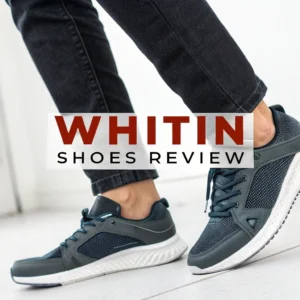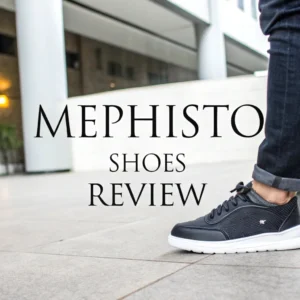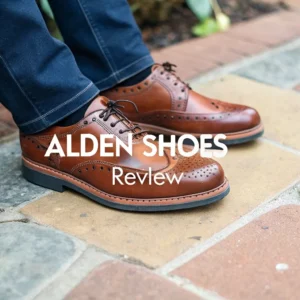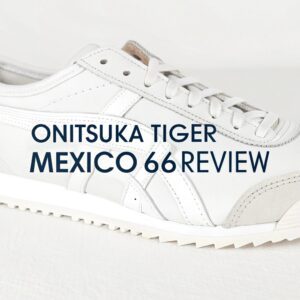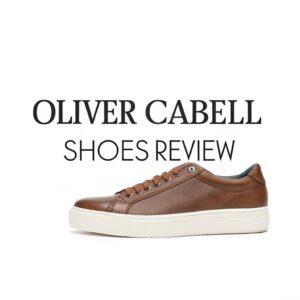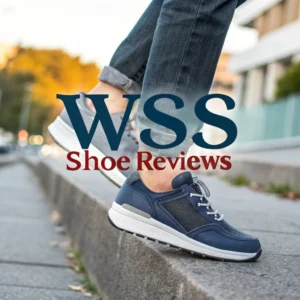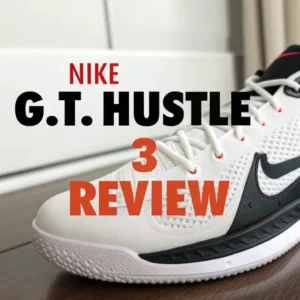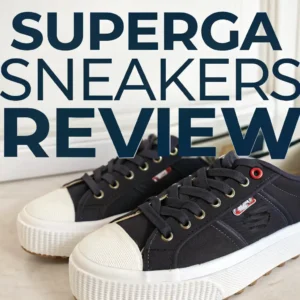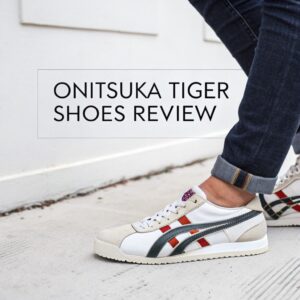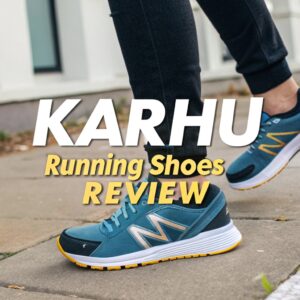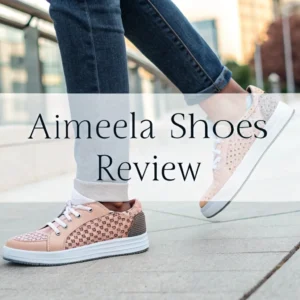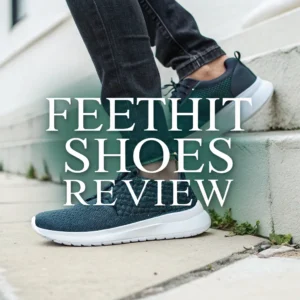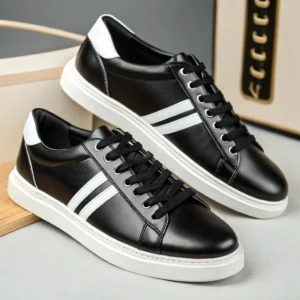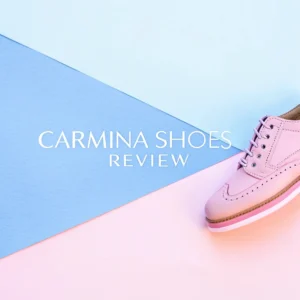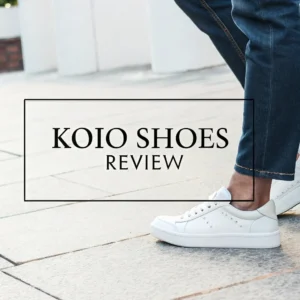Have you felt the need for more spring in your step? Are you an athlete looking to boost your performance naturally? VKTRY insoles might be the answer you need.
These carbon fiber performance insoles have taken the athletic world by storm with claims of improved speed, higher jumps, and better injury protection. But do they actually work?
In this review, we dig deep into what makes VKTRY insoles special and whether they live up to their impressive claims.
Key Takeaways: What You Need to Know About VKTRY Insoles
- Carbon Fiber Technology: VKTRY insoles use aerospace-grade carbon fiber that acts like a spring, storing and returning energy with each step
- Scientific Backing: Independent tests show users experience an average 1.6-inch increase in vertical jump height and 0.12-second faster 40-yard dash times
- Professional Adoption: Used by athletes at over 500 professional and college teams, including many NFL draft picks
- Injury Protection: Studies indicate VKTRY insoles can provide 41% reduction in foot injuries and 22% reduction in lower leg injuries
- Personalization: Each pair is custom-made based on your weight, age, gender, and sport type for optimal performance
- Price Point: Gold VK insoles cost approximately $150, which is less than most carbon-plated running shoes
- Durability: Expected to last 9-12 months of regular use, with some users reporting over 3 years of continued benefit
- Break-in Period: Most users need a 7-day gradual break-in period to adjust to the new feeling
- User Experience: Many users report feeling an immediate increase in explosiveness and better stability
- Return Policy: Comes with a 90-day money-back guarantee, allowing risk-free trial
What Are VKTRY Insoles? Understanding the Technology
VKTRY insoles are not your average shoe inserts. The core component that sets them apart is their full-length carbon fiber base. Carbon fiber has been used in sports equipment for years due to its impressive strength-to-weight ratio. It provides exceptional stiffness while remaining incredibly lightweight. When applied to insoles, this material creates a spring-like effect that stores and returns energy.
The technology behind VKTRY insoles was created by Matt Arciuolo, a Certified Pedorthist who worked with the US Olympic Bobsled Team. He noticed that standard insoles wasted energy during each step and developed carbon fiber insoles to capture and return that energy instead.
Each VKTRY insole contains three distinct layers working together. The carbon fiber baseplate forms the foundation, providing the energy return mechanism. Above this sits a layer designed for comfort and stability. The top layer uses EVA foam to create a comfortable interface with your foot.
What truly makes these insoles stand out is that they extend from heel to toe, unlike many competitor products that only provide partial support. This full-length design ensures consistent energy return and stability throughout your entire stride.
The Science Behind VKTRY Insoles: Do They Really Work?
Many performance products make big claims without scientific backing. VKTRY takes a different approach. Their insoles have undergone extensive scientific testing at multiple research institutions.
Performance studies conducted between 2015 and 2017 at institutions including Lafayette College, Southern Connecticut State University, and UConn showed impressive results. Athletes wearing VKTRY insoles saw improvements ranging from 2% to 9.3% across various performance metrics. The average vertical jump increase was 1.6 inches, and sprint times improved by an average of 0.12 seconds in 40-yard dash tests.
A 2019 study by the Korey Stringer Institute at the University of Connecticut focused on injury protection. Results showed that VKTRY insoles improved alignment and stability during running, which reduced stress on knees and ankles. They also increased shock absorption by 10%, lowering the impact forces on the entire body.
Dr. Douglas Casa, CEO of the Korey Stringer Institute, stated: “It is clear that VKTRY Insoles improve lower body biomechanics, stability of the ankle and knee during running, and shock absorption during landing. These improvements can help safeguard athletes by providing injury protection.”
How VKTRY Insoles Compare to Standard Insoles
When you first hold VKTRY insoles next to standard shoe insoles, the difference is immediately apparent. Standard insoles feel like soft construction paper while VKTRY insoles have the solid, structured feel similar to a metal plate.
Standard insoles are primarily designed for basic cushioning and minimal support. Made from foam or cellulose paperboard, they compress easily and provide little energy return. Many people assume more cushioning equals better performance, but research shows excessive cushioning can actually waste energy.
VKTRY insoles work differently. Instead of just absorbing impact, they store energy when your foot bends and then return it as you push off. This creates a noticeable propulsive effect with each step. The carbon fiber also provides consistent support that does not break down over time like foam does.
A key distinction is stability. Standard insoles offer minimal lateral support, while VKTRY insoles keep your foot aligned properly throughout movement. This improved alignment reduces strain on joints and helps prevent injuries common in athletic activities.
The Benefits of VKTRY Insoles for Athletes
Athletes across many sports report significant benefits from using VKTRY insoles. These advantages typically fall into three main categories: performance enhancement, injury protection, and improved comfort.
For performance, users consistently notice an increase in explosiveness. This translates to higher jumps, faster sprints, and more powerful cuts and directional changes. Basketball players report jumping higher for rebounds. Football players experience more explosive first steps. Runners see improved times across various distances.
The injury protection benefits stem from better biomechanics. VKTRY insoles help maintain proper foot alignment, which reduces stress on the entire kinetic chain from feet to knees to hips. Users with previous injuries often report less pain during activity, particularly those with plantar fasciitis, shin splints, or knee pain.
Many athletes are surprised by the comfort level. Despite the rigid carbon fiber construction, the layered design provides adequate cushioning. Users also report less fatigue after workouts and competitions, likely due to the reduced stress on joints and more efficient energy use.
One basketball player noted, “I spent about an hour with them on feeling them out and felt they were more comfortable than without these insoles in.”
VKTRY Insoles for Different Sports: Finding Your Perfect Match
VKTRY offers customized insoles for different sports, recognizing that movement patterns vary significantly between activities. When ordering, you select your specific sport to receive insoles optimized for those movements.
For runners and triathletes, VKTRY insoles provide consistent energy return throughout the stride. This helps maintain pace with less effort, particularly important during long distance events. The shock absorption also reduces joint stress over multiple miles. One triathlete reported, “VKTRY made me feel more springy and more bouncy. Compared to my old insoles? I’ll never wear those again.”
Basketball players benefit from the vertical boost. The carbon fiber plate helps store and return energy during jumps, potentially increasing vertical leap. The lateral stability also supports quick directional changes on the court.
Football players see gains in explosive first steps and improved stability during cuts. Many NFL prospects use VKTRY insoles during combine testing to maximize their performance metrics.
For field sports like soccer and lacrosse, the insoles provide stability on uneven surfaces while supporting quick accelerations and directional changes. The reduced fatigue can be particularly beneficial late in games when performance often declines.
The VKTRY Experience: From Ordering to First Use
The ordering process for VKTRY insoles is more detailed than standard insoles. You provide information including gender, sport type, shoe size, weight, and age. This data helps VKTRY create insoles with the correct top cover thickness and carbon fiber strength for your needs.
Once your insoles arrive, you need to follow a specific break-in process. Unlike regular insoles that you can use immediately, VKTRY recommends gradually increasing wear time over about a week. This allows your feet and body to adapt to the new forces and positioning.
A typical break-in schedule starts with 30 minutes of light activity on day one, gradually increasing duration and intensity each day. By day seven, most users can wear the insoles for any activity without discomfort.
First impressions vary among users. Some report an immediate “wow” feeling with noticeably increased spring in their step. Others take longer to adapt and notice the benefits. Most users describe the sensation as feeling more “connected” to the ground with increased bounce during push-off.
One reviewer noted: “From the first step I felt higher on my toes and propelled further forward with each stride.”
Are VKTRY Insoles Worth the Investment?
With Gold VK insoles priced around $150, potential buyers naturally wonder if the investment is justified. The value equation depends on several factors including your athletic goals, current injury status, and budget constraints.
For competitive athletes looking for performance gains, the price may be easily justified if the insoles deliver even small improvements. A few percentage points can make the difference between winning and losing in many sports.
For recreational athletes dealing with foot or leg pain, the injury protection benefits may provide value beyond performance gains. Many users report being able to train more consistently with less pain, which improves overall athletic development.
The durability factor also enters the value equation. VKTRY insoles typically last 9-12 months for average users, with some reporting over 3 years of use. Compared to premium running shoes that may need replacement after 300-500 miles, the cost per use can be favorable.
Another consideration is the 90-day money-back guarantee. This allows users to test the insoles without financial risk, as they can return them if the benefits do not justify the cost.
Common Issues and How to Address Them
Like any performance product, VKTRY insoles are not without potential challenges. Being aware of common issues helps users address them effectively.
Fit problems are the most frequently reported issue. The rigid carbon fiber construction means the insoles cannot be trimmed like regular foam insoles. Some users find the insoles push their feet too high in their shoes, creating tightness. The solution is often to wear the insoles in slightly larger shoes or those with removable stock insoles.
The break-in period can also present challenges. Some users experience mild discomfort as their feet adapt to the new support structure. Following the recommended gradual break-in schedule usually resolves these issues.
A small percentage of users do not feel significant performance benefits. This can sometimes be addressed by adjusting to proper form that maximizes the energy return properties. Working with a coach who understands the mechanics can help optimize the experience.
Some users with very specific foot conditions may find that the standardized arch shape does not match their needs. In these cases, consulting with a podiatrist about whether VKTRY insoles are appropriate for their specific foot structure is advised.
Real User Experiences: What Athletes Say About VKTRY Insoles
Across various review platforms, VKTRY insoles receive generally positive feedback, with many users reporting noticeable performance improvements. A professional basketball player noted, “I wore VKTRY Insoles throughout my rookie season and loved the added explosiveness.”
A collegiate track athlete shared, “I was skeptical at first but after breaking them in, I noticed I could maintain my sprint speed longer with less fatigue. My times have consistently improved since adding them to my training.”
Not all feedback is positive. Some users report minimal benefit or fit issues. One reviewer commented, “They felt too rigid in my running shoes and I never got used to the feeling. I ended up returning them.”
For injury recovery, many users report positive outcomes. A runner recovering from plantar fasciitis shared, “These insoles provided the support I needed to start running again without pain. The stability they provide has been key to staying injury-free.”
The consensus appears to be that results vary based on individual biomechanics, sport demands, and personal preferences. The 90-day return policy allows users to determine if the benefits justify the investment for their specific situation.
VKTRY Insoles vs. Carbon Plate Running Shoes: Which is Better?
In recent years, carbon plate running shoes have gained popularity for their energy return properties. How do VKTRY insoles compare to these “super shoes”?
The primary advantage of VKTRY insoles is versatility. You can move them between different shoes for various activities. This makes them more cost-effective than purchasing multiple pairs of carbon plate shoes for different purposes.
Carbon plate running shoes integrate the plate within a specific foam structure designed for running. This creates a highly tuned system for forward propulsion. VKTRY insoles, by contrast, adapt to whatever shoe they’re placed in, providing similar benefits across different footwear.
For pure running performance, especially racing, many elite runners still prefer specialized carbon plate running shoes. However, for athletes participating in multiple sports or those seeking the benefits across various activities, VKTRY insoles offer greater flexibility.
The durability comparison also favors VKTRY insoles. Carbon plate running shoes typically maintain their performance characteristics for 300-500 miles, while VKTRY insoles often last 9-12 months of regular use. For athletes logging serious mileage, this can represent significant cost savings over time.
The Future of Performance Insoles: Where VKTRY Leads
As athletic performance technology evolves, VKTRY continues to refine their offerings. The company has expanded from their original Gold model to include the more affordable Silver model, making the technology accessible to more athletes.
Research continues into optimizing the carbon fiber layup and flex patterns for specific sports and movement patterns. This ongoing development suggests future iterations may provide even more targeted performance benefits for different activities.
The success of VKTRY has also inspired more research into how foot-ground interaction affects overall athletic performance. This growing field may lead to new insights and technologies that further enhance human potential.
As carbon fiber manufacturing technology improves and costs decrease, we may see more accessible price points for this technology. This could eventually make high-performance insoles standard equipment for athletes at all levels.
The integration of smart technology into performance footwear represents another frontier. Future versions might incorporate sensors to provide data on force production, balance, and movement efficiency, creating a more complete performance enhancement system.
FAQs About VKTRY Insoles
Do VKTRY insoles really make you jump higher?
Yes, independent testing shows athletes wearing VKTRY insoles see an average 1.6-inch increase in vertical jump height.
How long do VKTRY insoles last?
Most users get 9-12 months of effective use from their VKTRY insoles. Professional athletes may wear them out in 5-6 months while some casual users report over 3 years of use.
Are VKTRY insoles comfortable?
Yes, despite their carbon fiber construction, VKTRY insoles include EVA foam layers for comfort. Most users find them comfortable after the recommended break-in period.
Do professional athletes use VKTRY insoles?
Yes, VKTRY insoles are used by athletes at over 500 professional and college teams. In the 2021 NFL Draft, 74 selected players had worn VKTRY insoles during their pro day or combine.
Can VKTRY insoles help with injuries?
Research shows VKTRY insoles improve foot and lower leg alignment, which can help prevent injuries and support recovery from conditions like plantar fasciitis and shin splints.
How do I know which VKTRY model is right for me?
VKTRY customizes your insoles based on your sport, weight, age, and gender. The website ordering process guides you through selecting the appropriate model.
Can I trim VKTRY insoles to fit my shoes?
No, VKTRY insoles cannot be trimmed due to their carbon fiber construction. You need to order the correct size for your shoes.
Do VKTRY insoles work in all types of shoes?
VKTRY insoles work in most athletic shoes with removable insoles. They perform best in shoes with adequate interior volume to accommodate their thickness.
What is the return policy for VKTRY insoles?
VKTRY offers a 90-day money-back guarantee. If you are not satisfied with the performance, you can return them for a full refund.
How do I clean VKTRY insoles?
VKTRY recommends wiping the insoles with a damp cloth and mild soap. Avoid machine washing or soaking the insoles as this may damage the layered construction.




